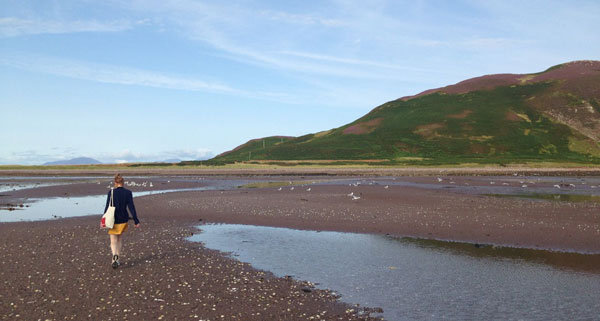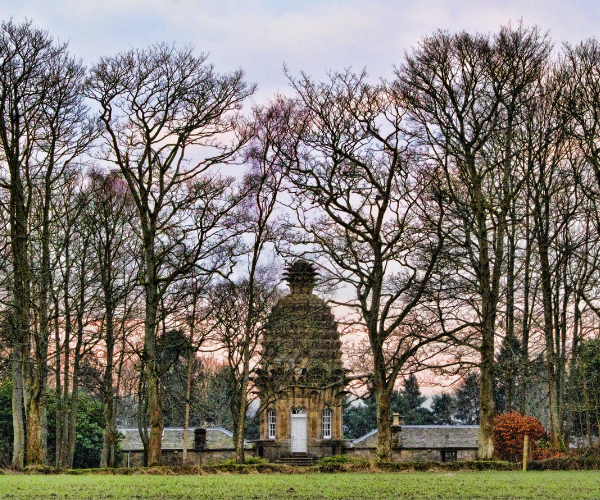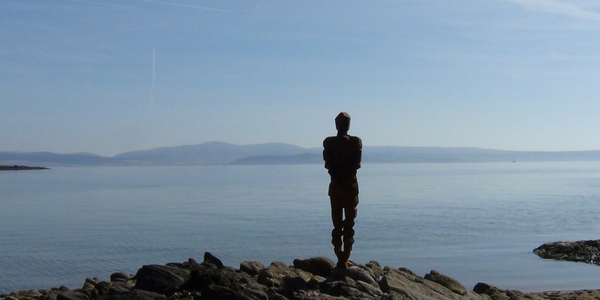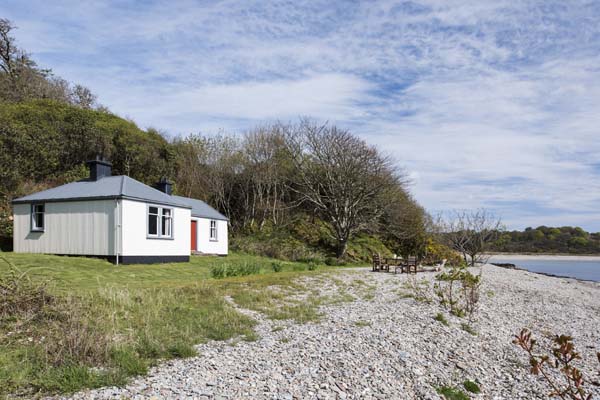
In Scotland, the journey to a remote destination is part of the experience. Reaching the Rest and Be Thankful pass means you’ve come as far as the Cobbler, one of the southern Highlands’ craggiest peaks. Drive from the south and see how the mountains begin to grow higher and knit together as you ascend, allowing only a sliver of road on the valley floor to dissect them.
To me, one of the highlights of exploring the Scottish wilderness is spotting buildings that punctuate the landscape. They can be as humble as a doocot, as intriguing as an abandoned farmstead or as imposing as a ruined Palladian mansion. Each one will give clues to the people who have lived on and worked the land.
Some structures have been built for pleasure. One example is The Pineapple, Landmark's exuberant stone structure built in the shape of the spiky-crested fruit. You might find a toadstool in a Scottish forest, or horse chestnuts, or brambles. But a pineapple? Only in Dunmore, near Falkirk in Stirlingshire.
 The Pineapple in Dunmore, Central Scotland sleeps up to 4 guests and is dog friendly.
The Pineapple in Dunmore, Central Scotland sleeps up to 4 guests and is dog friendly.
The architect of this whimsical folly flanked by stone cottages is unknown, but what is certain is who commissioned it. In 1761 the Fourth Earl of Dunmore had been married for two years; some speculate the folly was built for him as a belated wedding gift, or to commemorate the fertile nature of the Dunmore Estate’s vegetable garden.
Now its curling stone leaves delight guests who stay here every year and walkers who can view its exterior from the far side of the buildings. Distinctive touches can be spotted throughout: there’s a vintage book cabinet stuffed with titles on subjects the building is known for, such as the history of the folly or birds that make their home in the neighbouring forest. But it’s the Pineapple’s uniqueness that is its real draw. It is a purely ornamental structure, gleeful in its exuberance. Scotland’s architectural pedigree is enriched by it.
Bothies are no less important in Scotland’s story. When the Mountain Bothies Association was founded in 1965, its plan was clear. It wanted to offer shelter in remote Scottish locations for walkers and climbers, the idea being that if hikers made the sacrifice to explore extreme locations they should be rewarded by basic accommodation that was free of charge. The concept was rolled out across the country and aroused a new kind of generosity among landowners. Only one of the association’s bothies is actually owned by the organisation.
More than a hundred of these shelters are provided by estate owners on the proviso they are left clean and undamaged. “Bothying” came about as agricultural methods changed and farmsteads were increasingly abandoned. During the 1940s the idea of leisure was shifting as it began to mean roaming in the hills and countryside. Walkers looked for shelter on their meanderings, and these small buildings did the trick. Most are one-room buildings made with local stone and corrugated tin roofs equipped only with an open hearth, plus rudimentary bunks. Others have little more than a stone floor and walls. All share the same unique highlight: they are sited within some of the most breathtaking scenery that rural Scotland has to offer. To come across a bothy is the closest experience Scotland has to a palm tree-dotted island mirage after hours stranded out at sea. With one slight difference: this vision is real.
One of my favourites is The Schoolhouse, a corrugated tin bothy painted blue and grey set in an Easter Ross glen, was once a place of learning for the sons and daughters of ghillies who would tramp across land and loch to reach it, using stilts in high water. Rather than erase this slice of Scottish history, the association has kept it preserved. Campers looking for a coorie nook will still find blackboards and desks inside.
 The Art of Coorie, How to Live Happy the Scottish Way, by Gabriella Bennett
The Art of Coorie, How to Live Happy the Scottish Way, by Gabriella Bennett
The ideal coorie scene should reflect a balance of the outside and in. Bring to mind a day spent Munro-bagging or loch swimming, bookended by a bowl of something hot and nourishing as you dry off next to a heat source with a contented dog at your side. Don’t forget smell: faint lanolin clinging to woollen blankets, cinnamon dissolving into porridge cooking slowly on the hob, the frosty pinch of winter air when you step into a Trossachs morning. If a King Creosote album is playing as you road trip across the humpbacked northwest Highlands then all the better. The more homegrown ingredients are added to the mix, the coorier life will be.
There are other ways of using what’s around us to live more simply that relate to the ground beneath us. On Scotland’s most westerly fringes, a man looks out across the Sound of Kilbrannan. His body is made of multifaceted lumps of cast iron, each connecting to the next with hidden working. Smooth sides of matter take the place of his eyes. He is turned to the water but he can’t see it. The figure is GRIP, one of five temporary sculptures conceived by the artist Antony Gormley for Landmark's 50th anniversary and brought to the west of Scotland in 2015. Later, an anonymous donation allowed the sculpture to remain. The rest were removed and returned to Gormley.
 GRIP looks out to the Kilbrannan Sound
GRIP looks out to the Kilbrannan Sound
The one Scotland kept is a master of plurality. Its role runs deeper than simple shore treasure. It is a custodian, a gatekeeper between land and sea, and a representation of what can survive if the composition and conditions are right. Out here, the differences between the built and natural worlds were never clearer. This is not the coastline of VisitScotland adverts: the sand is coarse, dark; strata steep and slippery with horizontal grooves. Things live in the gaps. All lines point towards Cul na Shee.
In 1978 Landmark purchased the first of six properties on the Saddell Estate in a bid to save them from dereliction. Cul na Shee, the smallest, started life in the 1920s as a retirement home for an Argyll school teacher.
On acquisition, Landmark added a working bathroom, spruced the corrugated tin cladding and upgraded the inside space. Its kitchen may now contain a refrigerator, its bedrooms' plug points, but the crux of the space – uninterrupted views over the water – remains unchanged.
 Cul na Shee (meaning 'nook of peace' in Gaelic) at Saddell, sleeps up to 4 guests and is dog friendly.
Cul na Shee (meaning 'nook of peace' in Gaelic) at Saddell, sleeps up to 4 guests and is dog friendly.
Here you can swim in August seas under the gaze of GRIP. Entering the water is punishment but those who can bear it long enough are rewarded. From the shore the sea appears abstract but in it we become aware of the limits to which we extend, of the relationship between ourselves and the water.
At first, winded, you may worry this is the end. But it's the beginning of a deeper understanding that wildness can be an artist's iron man, ragged nails, hair that smells like bonfires, a dead mobile phone, a body heavy with quiet. At Cul na Shee all these things are given temporary life. Whether we choose to bring them back to our own worlds is up to us.
To enter a competition to win a copy of Gabriella's book, please email us with the answer to this question: What does the name Cul na Shee mean in Gaelic? Correct entries to [email protected] by midnight on 1 February will be entered into a draw to win a free copy. The winner will be chosen at random on 4 February and notified the following day. Good luck.